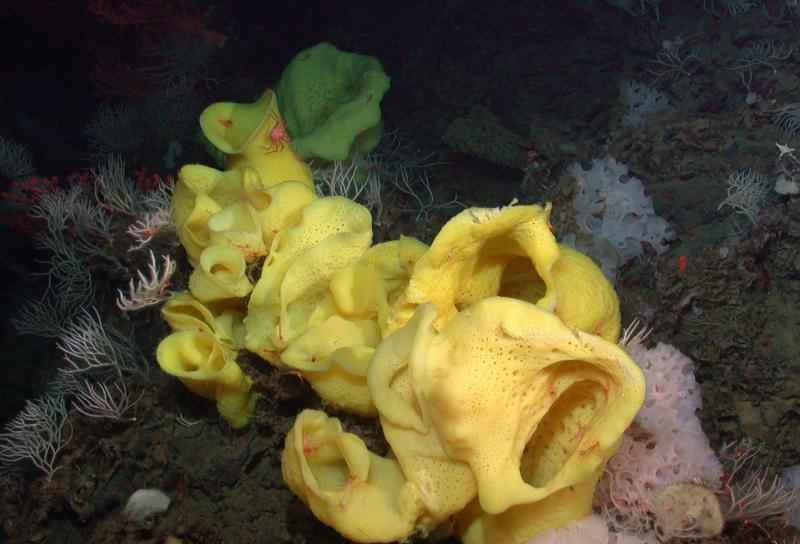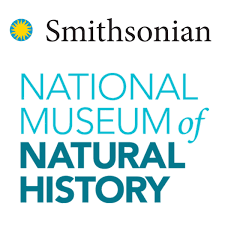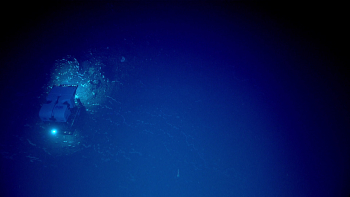
A yellow Picasso sponge in Davidson Seamount, off the coast of California. Credit: Monterey Bay Aquarium Research Institute, NOAA
NOAA’s Deep Sea Coral Research and Technology Program (Program) was established in 2007 under the Magnuson-Stevens Fishery Conservation & Management Act (or see Section 408). It is the nation’s only federal research program dedicated to increasing scientific understanding of deep-sea coral and sponge ecosystems. The Program is highly cost-effective and leverages partner expertise and resources to expand its reach, and allow use of the newest technologies. These actions enhance the impact of NOAA’s deep-sea exploration and research efforts. The Program’s cutting edge and collaborative research aids resource managers in developing and evaluating management options for these valuable and vulnerable habitats on which U.S. fisheries and communities depend.
The Program works with partners across the nation to support multi-year regional fieldwork initiatives and targeted projects centered on integrating new and existing information—including maintaining a national database of known coral and sponge occurrences—to maximize conservation impact while allowing sustainable fisheries to thrive. These products can be found on our data portal in the form of free downloadable data, interactive maps, images, technical reports, and other products.
There are several avenues through which deep-sea corals and sponges can be recognized and protected. The United States’ eight regional fishery management councils can designate Essential Fish Habitat (and Habitat Areas of Particular Concern within Essential Fish Habitat). The councils also work to protect deep-sea corals and sponges through developing fishery management plans and exercising other authorities to minimize bycatch of these important species. NOAA and other governmental bodies may also designate national marine monuments and national marine sanctuaries. The Program provides the latest and best-available information for these management decisions.
Deep-sea corals and sponges are invertebrates that live in the ocean at depths ranging from 50 meters (150 feet) to more than 6,000 meters (20,000 feet). Researchers have discovered deep-sea coral habitats on continental shelves, slopes, canyons, and seamounts in every region of the United States, yet their full geographic extent is still unknown. Deep-sea corals are closely related to tropical, shallow water corals but do not depend upon symbiotic algae and light to produce energy. In some areas, they form gardens or reefs of brightly colored tree-, feather-, and fan-like structures that can reach several meters (dozens of feet) tall.
Some deep‐sea coral and sponge communities form three dimensional structures above the seafloor that provide vital habitat for numerous fish and invertebrate species, many of which are harvested commercially. Beyond their benefits to surrounding ecosystems, corals and sponges are also valuable to humans in their own right. For example, some sponges produce chemicals that may be useful in treating diseases.
Because most deep-sea coral species grow extremely slowly, and some build reefs over hundreds of thousands of years, recovery from damage may take decades, or even centuries—if they recover at all. Because of their fragility and slow growth rates, these organisms are vulnerable to human-induced disturbances, such as bottom trawling, energy exploration and development, oil spills, the deployment of cables or pipelines, and impacts of climate change and ocean acidification. Overall, the main threat to these organisms is physical contact from fishing gear that disturbs the seafloor (see Chapter 4; PDF, 20 pages).
The Program has developed extensive partnerships to pursue joint priorities by leveraging each of these entities’ expertise and resources. The progress made to date would not be possible without immense support from our partners. Together, we are making great strides in better understanding deep-sea coral and sponge ecosystems, and informing related management decisions. Working with partners around a shared vision and combined investment not only allows us to do more together, it makes the difference between simply locating unknown deep-sea corals and better understanding the science and using it to inform our management.
Partners that collaborate with the Program on a national scale are listed below. The Program also coordinates with the nation’s eight regional fishery management councils and collaborates on research with other federal agencies, international partners, and non-governmental and academic scientists on a regional scale across the nation. These partnerships are further described on the regional pages.
Collaborating Offices Within NOAA
The Program, which is part of the Office of Habitat Conservation within NOAA Fisheries, relies on the leadership of research teams at each science center to coordinate and conduct projects that expand our knowledge of deep-sea coral and sponge ecosystems. NOAA Fisheries houses six regional fisheries science centers in the Pacific Islands, Alaska, the Northeast, the Southeast, the Northwest, and the Southwest United States. The bulk of these projects are completed when regional fieldwork initiatives are underway, but each science center also carries out smaller deep-sea coral projects on an ongoing basis.
NOAA's National Centers for Environmental Information (NCEI) hosts and provides public access to one of the largest archives of environmental data in the world. NCEI scientists manage the Program’s comprehensive national database of deep-sea coral and sponge observations and work closely with the Program to ensure that the data are accurate and up to date.
With the mission of exploring the ocean for the benefit of the nation, NOAA Ocean Exploration, within NOAA Research, is the only U.S. federal organization dedicated to exploring the deep ocean. The Program partners closely with NOAA Ocean Exploration to conduct dives specifically to explore deep-sea corals and sponges in various regions of the United States as well as in international waters.
NOAA's Office of National Marine Sanctuaries, housed within NOAA’s National Ocean Service, serves as the trustee for a network of underwater parks encompassing more than 600,000 square miles of marine and Great Lakes waters. The network includes a system of 15 national marine sanctuaries and Papahānaumokuākea and Rose Atoll marine national monuments. NOAA's Office of National Marine Sanctuaries has collaborated with the Program to study deep-sea ecosystems since the Program’s inception.
The National Centers for Coastal Ocean Science (NCCOS), sits within the National Ocean Service, as the focal point for NOAA’s coastal ocean science efforts. The Program has worked extensively with NCCOS to improve predictive habitat models for deep-sea coral and sponge communities in several regions of the United States. NCCOS also led the second Southeast fieldwork initiative.
Other Federal Agency Partners

The Department of the Interior’s Bureau of Ocean Energy Management (BOEM) manages the responsible development of America’s offshore energy and mineral resources. BOEM promotes energy independence, environmental protection, and economic development through responsible, science-based management of energy and mineral resources in the U.S. Outer Continental Shelf. BOEM and NOAA have a shared interest in improving data syntheses and habitat models to guide more efficient ocean mapping and exploration. BOEM has partnered closely with the Program to create improved maps that predict likely locations of undiscovered deep-sea coral and sponge communities in several regions of the United States, and to collaborate on numerous research and exploration efforts.

The U.S. Geological Survey (USGS) provides scientific information on natural hazards that threaten lives and livelihoods, the water, energy, minerals, and other natural resources we rely on, the health of our ecosystems and environment, and the impacts of climate and land-use change. USGS scientists develop new methods and tools to enable timely, relevant, and useful information about Earth and its processes. The Program has partnered with the USGS to improve seafloor mapping and study topics such as coral genetics, population connectivity, and environmental characteristics.
Other National-Level Partners

The Smithsonian National Museum of Natural History’s world-class analyses of NOAA Fisheries’ deep-sea coral collections is increasing our understanding of marine biodiversity and environmental change. NOAA Fisheries and the Smithsonian Institution have maintained a decades-long productive partnership, which has greatly benefited both agencies, the scientific community worldwide, and by extension, public access to scientific information.
Program efforts would also not be possible without extensive support from our nongovernmental, academic, and international partners. Explore the “Regions” section of this website for more information on partners that have contributed greatly to regional initiatives and other Program projects.
